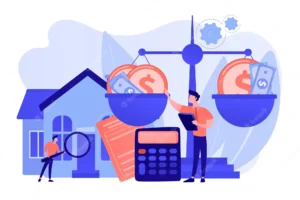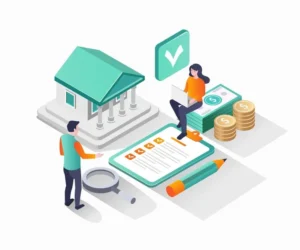Unpaid Tax Debts: Navigating Penalties, Interest, and Resolution

I. Introduction. Unpaid tax debts can cast a long shadow over one’s financial health, bringing forth a slew of challenges and repercussions. In this article, we delve into the complexities of unpaid tax debts and offer insights on how to effectively address them.
Contents
II. Understanding the Impact of Unpaid Tax Debts
Challenges Faced by Taxpayers:
Unpaid tax debts pose a multitude of challenges for taxpayers. These include not only the financial burden of the outstanding debt but also the accrual of penalties, interest, and the potential for legal actions by tax authorities.
Financial Strain and Stress:
Beyond the immediate financial consequences, unpaid tax debts can lead to significant stress and anxiety. The threat of damaging one’s credit score adds to the pressure, making it imperative to address these debts promptly.
III. Penalties and Interest: A Closer Look
Types of Penalties:
Penalties for unpaid tax debts come in various forms, including late payment penalties, failure-to-file penalties, and accuracy-related penalties. Understanding these penalties is crucial to grasp the full extent of the consequences.
Interest Accrual:
Interest on unpaid tax debts can accumulate rapidly. It’s vital to comprehend how interest accrues, as it can significantly inflate the total amount owed over time.
IV. Options for Resolving Unpaid Tax Debts
Negotiating with Tax Authorities:
Communicating with tax agencies is a pivotal step in resolving unpaid tax debts. Taxpayers can work with authorities to establish manageable payment plans or explore offer-in-compromise programs that may allow them to settle their debts for less than the full amount owed.
Exploring Tax Relief Programs:
Certain taxpayers may qualify for tax relief programs designed to alleviate the burden of unpaid tax debts. These programs often have specific eligibility criteria and require a formal application process.
V. Avoiding Future Tax Debt Issues
Effective Tax Planning:
Tax planning is essential to prevent the accumulation of unpaid tax debts. It involves assessing your financial situation, managing withholding allowances, and making estimated tax payments, if necessary, to ensure you’re on track with your obligations.
Financial Education and Responsibility:
A strong foundation in financial literacy empowers individuals to fulfill their tax obligations. Being proactive in addressing tax responsibilities and seeking expert advice when needed are key aspects of financial responsibility.
VI. Real-Life Stories of Overcoming Unpaid Tax Debts
Success Stories:
Hearing from individuals who have successfully navigated the challenges of unpaid tax debts can provide valuable insights and inspiration. Their experiences highlight practical strategies and the importance of taking action.
VII. Conclusion
Unpaid tax debts need not be insurmountable obstacles. By understanding the impact of unpaid tax debts, exploring options for resolution, focusing on effective tax planning, and drawing inspiration from real-life success stories, individuals can take proactive steps toward addressing unpaid tax debts and securing a more stable financial future.







